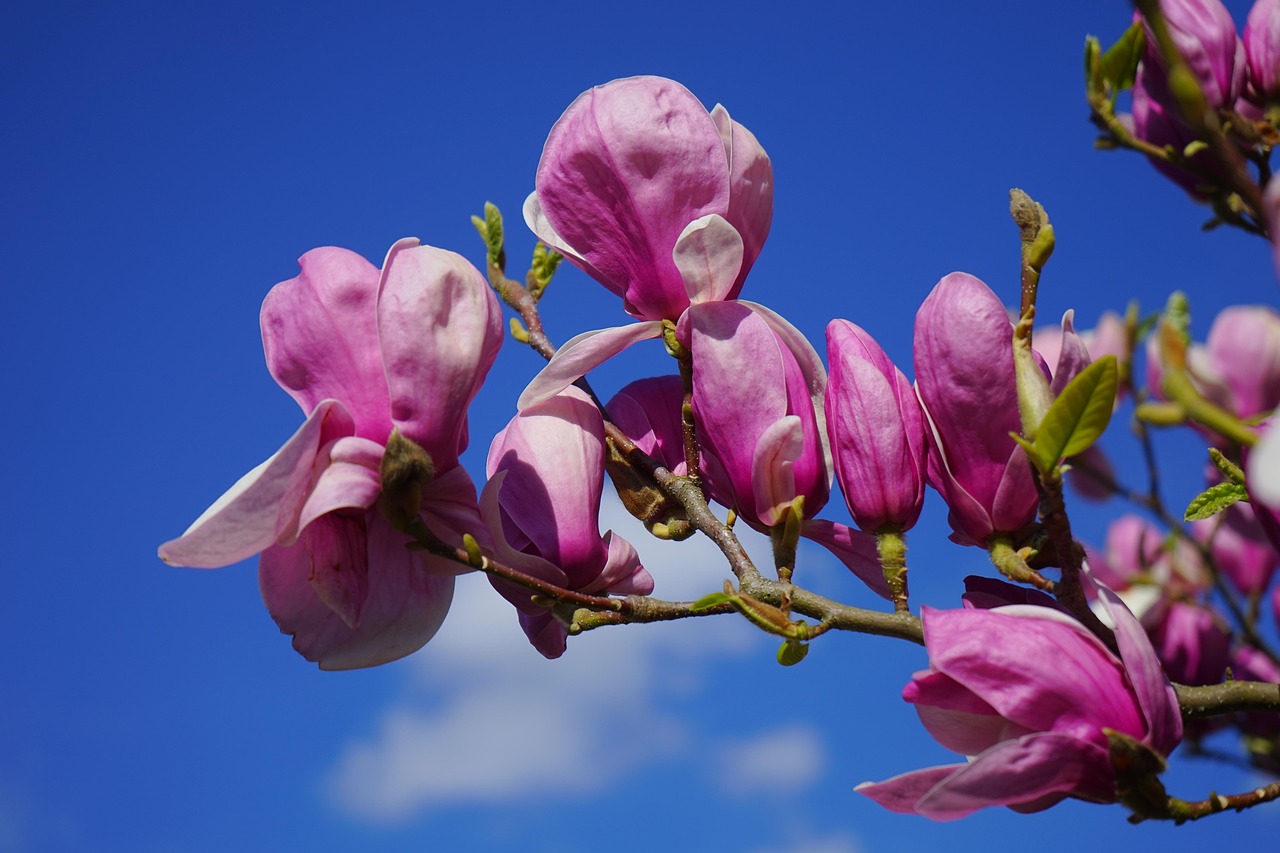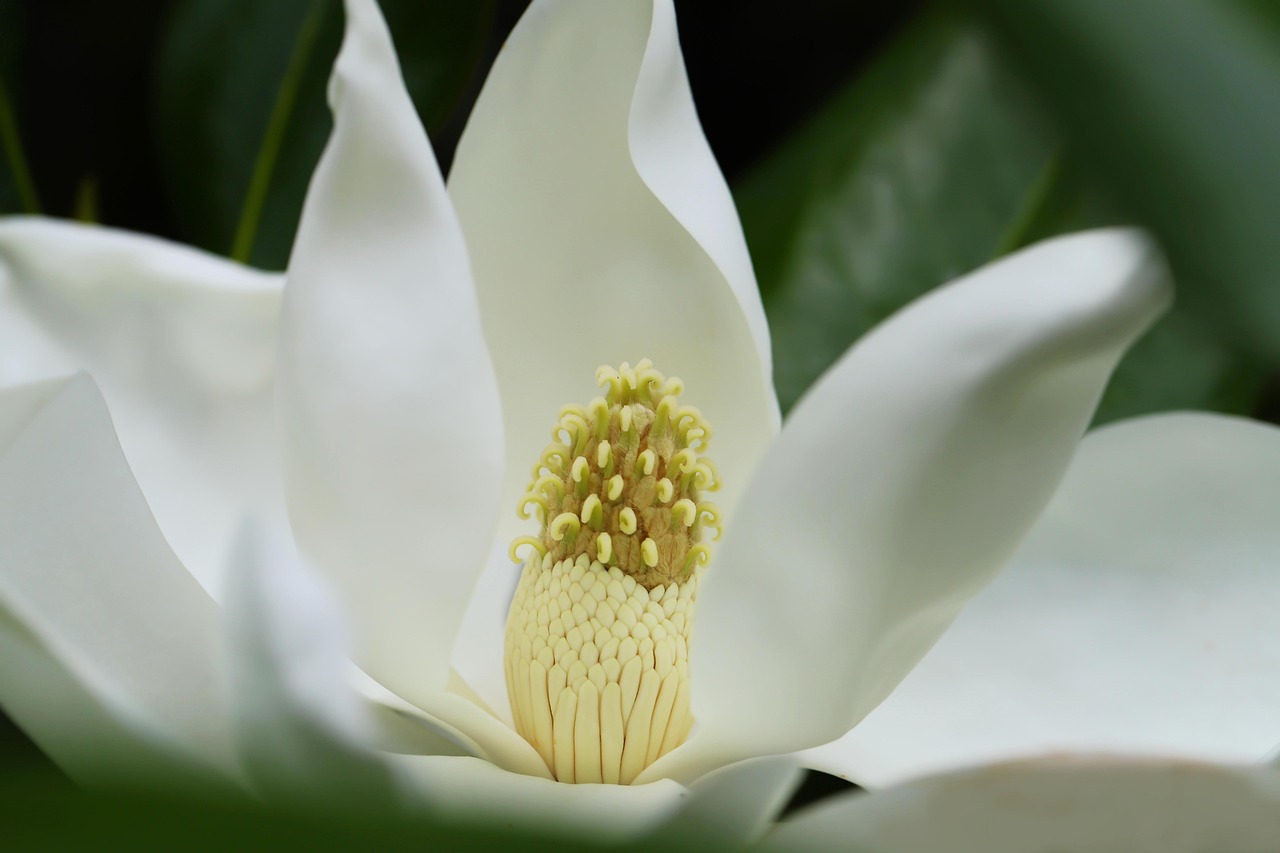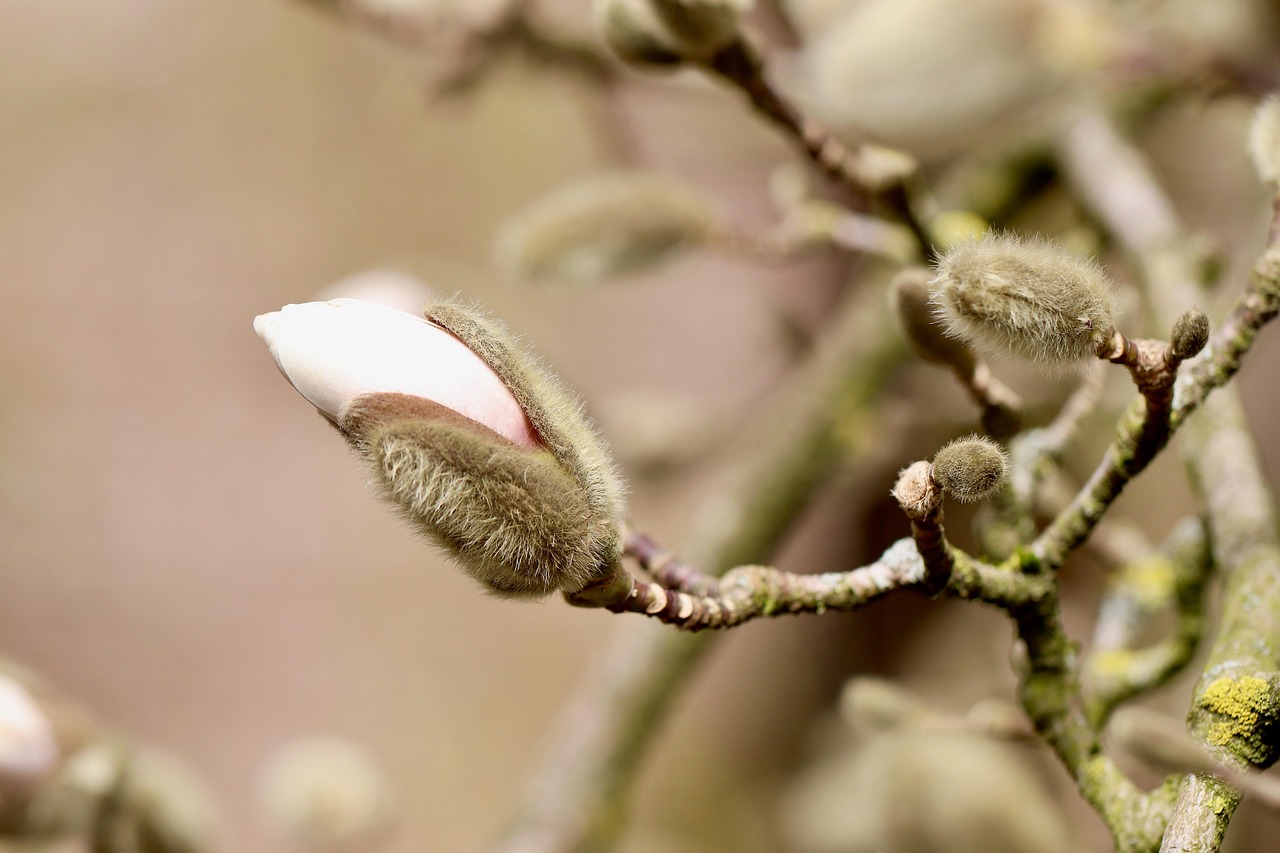Magnolia tree pruning in urban plazas is essential for maintaining tree health, aesthetics, and safety. Regular pruning helps control growth, improve air circulation, and enhance flower production while reducing the risk of falling branches.
Magnolia trees are prized for their stunning flowers and broad leaves, making them a popular choice for urban environments. In city plazas, these trees not only provide beauty but also contribute to improved air quality and shade. However, urban settings can present unique challenges for tree maintenance. Pruning becomes crucial to ensure that these magnificent trees thrive amidst the stresses of city life.

Pruning magnolia trees requires understanding their growth habits and specific needs. Different species of magnolia may have different pruning requirements. For example, Southern magnolias (Magnolia grandiflora) may need less frequent pruning than star magnolias (Magnolia stellata). Proper timing and techniques can enhance both the health of the tree and its visual appeal.
Understanding Magnolia Trees
Magnolia trees belong to the family Magnoliaceae and are known for their large, fragrant blossoms. These trees can vary significantly in size and shape, with some growing as small shrubs and others reaching heights of over 80 feet. The following table outlines some common species of magnolia trees found in urban areas, along with their key characteristics.
| Species | Common Name | Height | Flower Color |
|---|---|---|---|
| Magnolia grandiflora | Southern Magnolia | 60-80 ft | White |
| Magnolia stellata | Star Magnolia | 15-20 ft | White/Pink |
| Magnolia x soulangeana | Saucer Magnolia | 20-30 ft | Purple/White |
| Magnolia liliiflora | Lily Magnolia | 10-20 ft | Pink/Purple |
When planning for magnolia tree pruning, it is important to consider various factors. These include the tree’s age, health, and growth habit. Urban trees often face stress from pollution, soil compaction, and limited space. This context makes careful pruning even more vital to promote resilience and longevity.

Reasons for Pruning Magnolia Trees
Pruning serves multiple purposes for magnolia trees in urban plazas. Some of the most significant reasons include:
- Health Maintenance: Regular pruning helps remove dead or diseased branches, reducing the risk of infection.
- Aesthetic Appeal: Pruned trees maintain a pleasing shape and enhance the visual landscape of urban areas.
- Safety: Removing low-hanging branches minimizes hazards for pedestrians and vehicles.
- Improved Air Circulation: Thinning out dense foliage allows better airflow, which is crucial in preventing fungal diseases.
- Encouraging Flower Production: Pruning can stimulate new growth and promote more abundant flowering in the following season.
The best time to prune magnolias depends on the species and local climate. Generally, late winter or early spring is ideal, just before new growth begins. This timing allows for minimal disruption to the tree’s flowering cycle. However, it’s essential to avoid major cuts during the fall, as this can expose the tree to winter damage.
Basic Pruning Techniques
When pruning magnolia trees, using proper techniques ensures that the tree remains healthy and grows well. Here are some essential methods:

- Crown Thinning: Remove select branches to increase light penetration and air circulation.
- Crown Raising: Trim lower branches to create space underneath the tree, enhancing visibility and accessibility.
- Crown Reduction: Reduce the height or spread of the tree by cutting back on larger branches while maintaining its natural shape.
- Deadwooding: Remove dead or dying branches at any time throughout the year to keep the tree healthy.
Using sharp, clean tools is essential to make precise cuts that heal quickly. Cuts should be made just outside the branch collar to encourage proper healing and minimize damage. Avoid leaving large stubs, as these can lead to decay.
In urban settings, it’s also important to consider the overall landscape design when planning pruning activities. Collaboration with landscape architects or arborists can help ensure that tree maintenance aligns with broader urban design goals.
The Role of Arborists in Pruning
For many urban plazas, hiring a certified arborist can be beneficial. Arborists are trained professionals who possess specialized knowledge about tree care. They can offer valuable insights into when and how to prune magnolia trees effectively.

Additionally, they can assess tree health, identify potential risks, and suggest appropriate maintenance practices tailored to specific urban conditions. Working with an arborist ensures that pruning activities support the long-term health of magnolias while enhancing their contribution to urban landscapes.
Environmental Considerations in Urban Pruning
Pruning magnolia trees in urban plazas requires an understanding of the environmental factors that can affect tree health. Urban areas often present unique challenges due to pollution, compacted soil, and limited space. These conditions necessitate a tailored approach to pruning that considers the overall ecosystem.
One critical aspect of urban tree care is the impact of air and soil quality on tree growth. Factors such as traffic emissions and construction activities can lead to higher levels of pollutants in the soil and air. Consequently, this can stress trees and make them more susceptible to diseases. Proper pruning can help mitigate some of these issues by enhancing tree health and resilience.
Soil Health and Tree Growth
Healthy soil is vital for the growth of magnolia trees. In urban settings, soil can become compacted, reducing its ability to retain moisture and nutrients. Here are some practices to maintain soil health around magnolia trees:
- Aeration: This process involves perforating the soil with holes to allow air, water, and nutrients to penetrate deeper.
- Mulching: Applying organic mulch around the base of the tree can help retain moisture, suppress weeds, and improve soil quality as it decomposes.
- Soil Testing: Conducting regular soil tests can identify nutrient deficiencies and inform the necessary amendments to support tree health.
Seasonal Considerations for Pruning
The timing of pruning activities can significantly affect the success of magnolia tree maintenance. Different seasons provide unique opportunities and challenges for pruning in urban settings.
Here is a breakdown of how seasonal changes can influence pruning:
| Season | Pruning Focus | Considerations |
|---|---|---|
| Spring | Initial shaping and deadwooding | Perform after flowering for minimal impact on blooms. |
| Summer | Thinning for air circulation | Avoid heavy cuts to prevent stress during hot months. |
| Fall | Clean-up of dead or damaged branches | Avoid major pruning before winter to reduce exposure to cold. |
| Winter | Major structural pruning | Best time for significant cuts when the tree is dormant. |
Understanding these seasonal dynamics helps ensure that pruning activities align with the natural growth cycles of magnolia trees. Proper timing minimizes stress and promotes recovery, allowing trees to flourish in urban environments.
Pest and Disease Management
Pests and diseases are common challenges for magnolia trees, particularly in urban settings where stress factors are heightened. Regular observation and timely pruning can help manage these threats effectively.
Some common pests affecting magnolias include:
- Scale Insects: These can weaken trees by sucking sap from the leaves. Regular inspections can help spot infestations early.
- Magnolia Blossom Weevil: This pest targets flower buds, damaging them before they bloom. Pruning affected buds can reduce their spread.
- Aphids: Small insects that feed on new growth, leading to stunted development. They can be controlled through appropriate pruning and insecticides if necessary.
Diseases such as leaf spot and powdery mildew can also affect magnolias. Proper maintenance includes:
- Regular Pruning: Removing diseased leaves and branches helps prevent the spread of infections.
- Water Management: Avoid overhead watering to reduce humidity around the leaves, which encourages fungal growth.
- Fungicide Treatments: In severe cases, applying fungicides may be necessary under the guidance of a certified arborist.
The Aesthetic Impact of Pruning
The visual appearance of magnolia trees is a significant factor in urban plaza design. Proper pruning enhances not only the beauty of the trees but also their integration into the surrounding landscape. A well-pruned magnolia can serve as a focal point, drawing attention and admiration from visitors.
The following aspects contribute to the aesthetic appeal of pruned magnolias:
- Naturally Shaped Canopy: Pruning helps maintain a balanced canopy that enhances the tree’s natural form.
- Enhanced Flowering: By removing excess foliage, more energy is directed toward flower production, resulting in a more vibrant display.
- Improved Visibility: Thinning out branches allows for better sightlines within the plaza, creating an open and inviting space.
Moreover, integrating magnolias into a cohesive landscape design involves considering their placement in relation to other plants, pavement, and seating areas. This strategic planning enhances both functionality and aesthetics, creating an appealing environment for urban dwellers.
Community Involvement in Urban Tree Care
Engaging the community in tree care initiatives can foster stewardship and appreciation for urban green spaces. Educating residents about the benefits of pruning magnolia trees helps cultivate a sense of responsibility toward their maintenance.
Community programs may include:
- Tree Planting Events: Involving local citizens in planting new magnolias creates a connection with nature.
- Workshops on Tree Care: Providing hands-on training on proper pruning techniques empowers residents to contribute to tree health.
- Volunteer Pruning Days: Organizing groups to assist with seasonal pruning promotes community bonding while maintaining public spaces.
Encouraging community participation not only benefits tree health but also enhances social connections among residents, fostering a shared commitment to urban sustainability.
Tools and Techniques for Effective Pruning
To ensure successful pruning of magnolia trees in urban plazas, using the right tools and techniques is essential. Proper equipment not only makes the job easier but also promotes the health of the tree. Here are some commonly used tools for pruning:
- Pruning Shears: Ideal for cutting small branches and stems. They provide precision and require minimal effort.
- Loppers: These are useful for thicker branches that cannot be managed with pruning shears. Loppers provide extra leverage, making cuts easier.
- Hand Saws: For larger limbs, a hand saw can be effective. It allows for clean cuts without damaging the tree.
- Pole Saws: These extendable saws are excellent for reaching higher branches without the need for a ladder.
- Safety Gear: Gloves, goggles, and a hard hat are important for personal safety while pruning.
Learning how to use these tools effectively is crucial. Improper use can lead to injury or damage to the tree. It is advisable to familiarize oneself with the specific cutting techniques for each tool to ensure clean and effective cuts.
Proper Pruning Techniques
In addition to having the right tools, mastering proper pruning techniques is vital for maintaining healthy magnolia trees. Here are some key techniques to consider:
- Cutting Angle: Always make cuts at a slight angle. This promotes water runoff and reduces the risk of rot.
- Branch Collar Cutting: When removing branches, cut just outside the branch collar. This helps the tree heal more effectively.
- Selective Pruning: Focus on removing specific branches rather than thinning out too much foliage at once. This preserves the tree’s natural shape.
- Thinning vs. Topping: Avoid topping trees as it can lead to weak growth and increased susceptibility to disease. Thinning should be the preferred method.
- Regular Maintenance: Implement a consistent pruning schedule to maintain tree health throughout its life span.
The Importance of Timing in Pruning
Timing plays a crucial role in the effectiveness of pruning magnolia trees. Different species and local climates can influence the best times for pruning activities. Understanding when to prune is essential for promoting healthy growth and flowering.
The following table summarizes optimal pruning times based on different factors:
| Factor | Best Pruning Time | Reasons |
|---|---|---|
| Species Type | Late Winter to Early Spring | This timing avoids disrupting flower buds, allowing trees to bloom beautifully in spring. |
| Tree Age | Younger Trees: Annually; Mature Trees: Every 2-3 Years | Younger trees benefit from regular shaping, while mature trees require less frequent intervention. |
| Disease Management | As Soon as Symptoms are Noticed | Timely removal of affected branches can help stop diseases from spreading to healthy parts of the tree. |
| Seasonal Growth Patterns | Post-Bloom Period | This ensures that flowering is not disrupted while still promoting new growth. |
Challenges of Urban Pruning
Pruning magnolia trees in urban plazas comes with its own set of challenges. Understanding these obstacles can help tree care professionals and volunteers prepare effectively. Some common challenges include:
- Limited Space: Urban environments often have restricted space around trees, making it difficult to access lower branches without causing damage.
- Pavement Damage: Tree roots may disrupt pavement surfaces, complicating pruning efforts while maintaining safety for pedestrians.
- Pollution Stress: Urban pollution can weaken trees, making them more susceptible to disease and pests, which may require more frequent attention.
- Cable and Utility Lines: Trees growing near power lines must be pruned with caution to avoid interference with utilities, often requiring specialized skills.
- Public Safety: Ensuring that pruning does not pose a risk to pedestrians during and after the process is critical in busy urban areas.
Addressing these challenges involves careful planning and execution of pruning activities. Collaborating with local authorities and experienced arborists can enhance safety and efficiency during tree maintenance operations.
Sustainability Practices in Urban Tree Care
Sustainable practices in urban tree care contribute to the overall health of the environment and community well-being. Incorporating sustainability into magnolia tree pruning involves using eco-friendly methods and materials. Here are some approaches to consider:
- Organic Mulching: Using organic materials for mulching not only benefits tree health but also enriches soil quality over time.
- Natural Pest Control: Encouraging beneficial insects and avoiding chemical pesticides can help maintain a balanced ecosystem around magnolias.
- Composting Tree Waste: Rather than disposing of pruned branches and leaves, composting can create nutrient-rich materials for future landscaping needs.
- Water Conservation: Implementing efficient irrigation systems that minimize waste supports overall tree health while conserving resources.
Sustainable practices not only enhance the health of magnolia trees but also contribute positively to urban ecology. By fostering a healthy environment, communities can enjoy the beauty and benefits of these magnificent trees for generations to come.
The Future of Magnolia Trees in Urban Design
The role of magnolia trees in urban design is evolving as cities become more focused on sustainability and green spaces. As urban areas continue to grow, integrating magnolias into landscape planning will be vital for enhancing public spaces.
This involves considering factors such as:
- Diversity in Planting: Including various species of magnolias can create a more resilient urban canopy that withstands pests and diseases.
- Climate Adaptation: Selecting tree species that thrive in changing climate conditions encourages long-term sustainability.
- Aesthetic Integration: Thoughtfully placing magnolias in conjunction with other landscaping elements enhances both beauty and function within urban plazas.
The future of urban green spaces will depend on ongoing commitment to caring for magnolia trees through proper pruning, community involvement, and sustainable practices. Through these efforts, cities can create vibrant environments that benefit both nature and residents alike.
Best Practices for Ongoing Maintenance
To ensure the long-term health and beauty of magnolia trees in urban plazas, ongoing maintenance practices are essential. Regular care extends beyond pruning and involves a holistic approach that encompasses various aspects of tree health management.
Some best practices for ongoing maintenance include:
- Regular Inspections: Frequent checks for signs of pests, diseases, and structural issues help catch problems early. Monitoring the overall health of the trees ensures timely interventions.
- Watering: Adequate watering, especially during dry spells, is crucial for magnolia trees, particularly when newly planted. Deep watering encourages root development and resilience.
- Nutrient Management: Fertilizing with a balanced fertilizer can support growth, especially in nutrient-poor urban soils. Soil testing can guide appropriate amendments.
- Weed Control: Keeping the area around magnolia trees free from weeds reduces competition for nutrients and water. Mulching can also help suppress weed growth.
- Community Education: Continuing to educate community members about proper tree care fosters a culture of stewardship. Informational workshops and materials can empower residents to participate actively in tree care.
Innovative Approaches to Urban Tree Care
As cities evolve, innovative approaches to urban tree care are emerging. Incorporating technology and modern practices can enhance the effectiveness of tree maintenance.
A few innovative strategies include:
- Smart Irrigation Systems: Utilizing technology to monitor soil moisture levels can optimize watering schedules and reduce water waste. Automated systems can adjust to weather conditions for efficient water use.
- Drones for Monitoring: Drones can assist in surveying large urban areas, identifying tree health issues from above, and mapping out maintenance needs efficiently.
- Tree Canopy Assessments: Using software to assess tree canopy coverage can help urban planners make informed decisions about planting and pruning strategies.
- Community Apps: Developing apps that allow residents to report tree health issues or participate in local tree care initiatives can enhance community engagement and facilitate communication.
The Economic Benefits of Magnolia Trees
Investing in the maintenance of magnolia trees in urban plazas provides significant economic benefits. Healthy trees contribute to increased property values, attract tourism, and promote business activity. Here are some notable economic advantages:
- Increased Property Values: Well-maintained urban green spaces enhance the aesthetic appeal of neighborhoods, leading to higher property values.
- Tourism Attraction: Beautiful urban plazas featuring magnolias can become popular destinations for visitors, boosting local tourism revenue.
- Energy Savings: Trees provide shade, reducing the need for air conditioning in nearby buildings, which can lead to lower energy costs for residents and businesses.
- Health Benefits: Urban greenery contributes to improved public health by promoting physical activity and reducing air pollution, which can lower healthcare costs in the long run.
Final Thoughts
The care and pruning of magnolia trees in urban plazas are integral to creating vibrant and sustainable public spaces. Through effective pruning techniques, community involvement, and ongoing maintenance, cities can ensure these beautiful trees thrive amidst urban challenges.
The integration of magnolias into city landscapes not only enhances aesthetic appeal but also contributes positively to environmental health. By recognizing the importance of these trees and implementing best practices, communities can foster a deeper appreciation for their natural surroundings.
As we move forward, collaboration among city planners, arborists, and residents will be critical in shaping urban green spaces that are both functional and beautiful. Investing time and resources into the care of magnolia trees will yield long-lasting benefits for both people and nature alike. Together, we can cultivate thriving urban environments that celebrate the beauty and resilience of magnolia trees, enriching our cities for generations to come.
